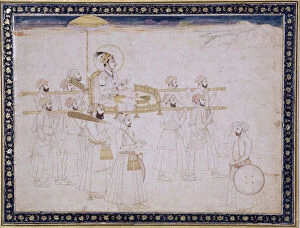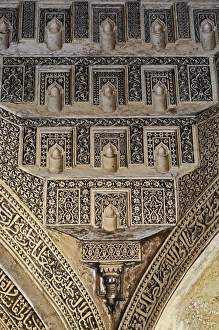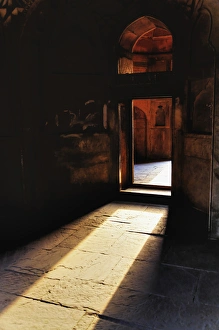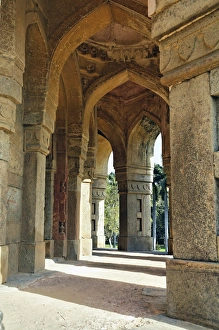Muhammad Shah Collection
Muhammad Shah, a name that resonates with power and grandeur
All Professionally Made to Order for Quick Shipping
Muhammad Shah, a name that resonates with power and grandeur. His reign from 1834 to 1848 was marked by opulence and splendor, evident in the royal tent made exclusively for him. This exquisite textile masterpiece showcases the craftsmanship of the era. Enthroned on a terrace at night, Muhammad Shah exudes authority as he is surrounded by his loyal officers. The scene captures the essence of his rule - majestic and commanding. In another depiction, we see Muhammad Shah being carried in a palanquin, symbolizing his regal stature. The opaque watercolor and gold details on paper bring this moment to life, showcasing the artist's skillful hand. However, not all moments were victorious for Muhammad Shah. Nadir Shah's defeat of him is depicted on the peacock throne - an image that serves as a reminder of both triumphs and tribulations faced by rulers throughout history. Yet amidst battles and political affairs, there were also leisurely pursuits enjoyed by Muhammad Shah. Equestrian in nature, he can be seen hunting in vast fields – a testament to his love for adventure and outdoor activities. The influence extended beyond himself; Queen Udham Bai was entertained during his reign. Opaque watercolor strokes embellished with gold paint capture her gracefulness within these artistic renderings. A significant document from this period is the Firman Qajar dated A. H. 1250 / A. D. 1835 – its creator remains unknown but it holds historical importance nonetheless. Portraits immortalize individuals through time; one such portrait depicts Muhammad Shah Qajar alongside his Vizier Haj Mirza Aghasi – their partnership integral to governing effectively during those years. Mohammad Shah's final resting place lies in Delhi where his tomb stands tall till this day - an architectural marvel adorned with intricate details that reflect the rich heritage of India.















